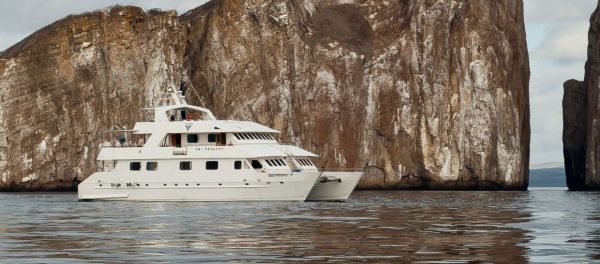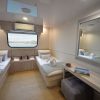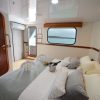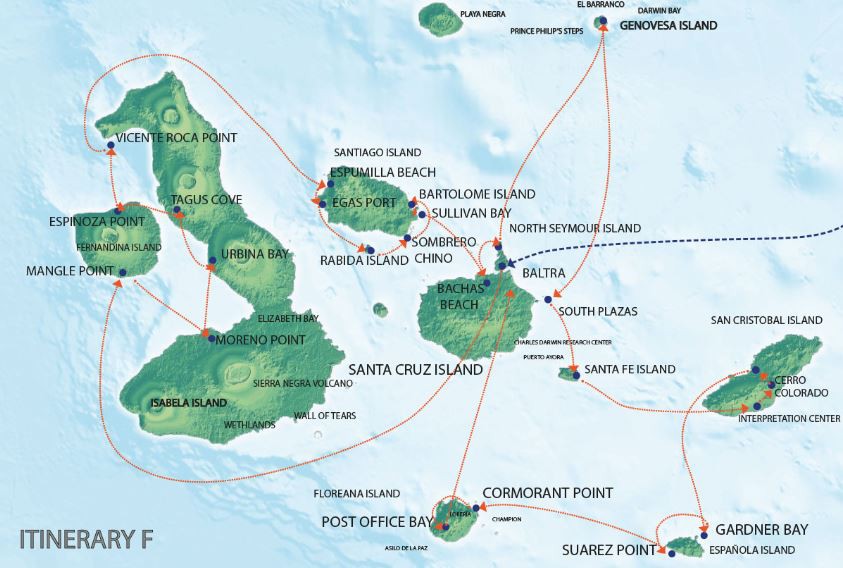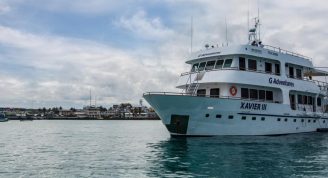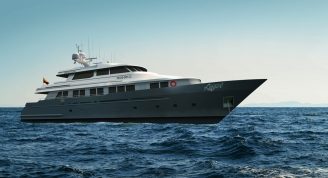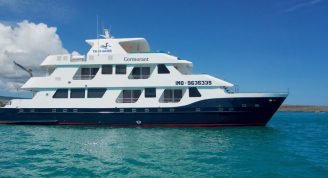Description
During our Galapagos cruises, guests encounter many endemic species like Galapagos Giant Tortoises, Penguins, Land and Marine Iguana´s, Frigate Birds, Blue Footed Boobies, and much more!
Trip Name
Seaman Journey F Itinerary
Days
15
Overview
Vessel Type: Motor Catamaran
Length: 11 m
Passenger Capacity: 16
Built / refurbished: 2007 / 2019
M/C Galapagos Seaman Journey is a first class catamaran that began sailing the Galapagos Islands in January 2008. It is a Boutique Yacht Catamaran offering superior comfort, size, style, and stability. The Galapagos Seaman Journey makes it possible to enjoy several cruises in the Galapagos with different itineraries that include amazing land tours on most of the Galapagos Islands. During these Galapagos cruises, guests encounter many endemic species like Galapagos Giant Tortoises, Penguins, Land and Marine Iguana´s, Frigate Birds, Blue Footed Boobies, and much more!
During one of the cruises, each guest can enjoy the well-furnished facilities offering comfort and privacy. Galapagos Seaman Journey has a maximum capacity of 16 passengers allowing privacy and camaraderie at the same time. We have several resting areas for those who are looking for a quiet place to relax during their Galapagos trip with family and friends in the lazy mid-afternoon sun, or likewise after a busy day of swimming, snorkeling, kayaking, or walking on one of the Galapagos Islands.
To check out the gorgeous ocean views with fellow shipmates, guests can spend some time on the liveaboard’s spacious sundecks. Whether they feel like getting a little sun on their vacation or want the best place to enjoy the gorgeous sunsets over the Galapagos Islands, our sundecks are the best place to be.
For the adults who might want to relax and kick back, we offer a great bar and lounge area where they are served by our bartender who will be happy to attend to all their needs and desires whilst you relax.
Fine dinning & Cuisine
Each meal on board is a treat for the taste buds as our chef prepares the finest international and local dishes using fresh ingredients of the highest quality. All meals include the choice of meat, poultry or seafood. In the case you have a food allergies or food restriction, we can adapt the menu to your requirements.
Nature Lectures
After a full day of visits to the islands you will get to learn a little more about the sights you visited and will be able to ask your guide specific questions about wildlife, geology, marine life, biology, and other topics. Our certified naturalist guide speaks English and has extensive experience in the Galapagos Islands.
Well planned itinerarires
We believe that the key to a great itinerary is variety and therefore the M/C Galapagos Seaman Journey visits several types of ecosystems within the Galapagos Island.
Great shore Excursions
Our shore excursions are packed full of several activities and lots of fun. A typical visit to a National Park landing site includes a nature hike, zodiac ride, snorkeling or kayaking and of course time out to relax on the beach.


